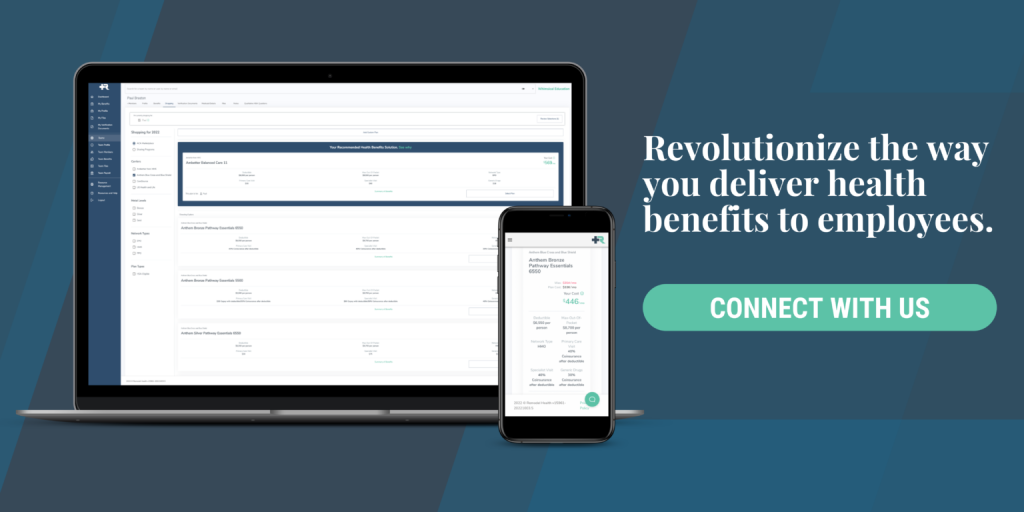
When implementing an Individual Coverage Health Reimbursement Arrangement (ICHRA) for your organization, it’s crucial to ensure compliance with the Affordable Care Act (ACA) regulations.
In today’s blog post, we’ll provide a step-by-step guide to help you navigate the world of ICHRA and ACA compliance.
If you’re new to ICHRA, check out our previous blog, What is ICHRA and how does it work?
Ready to embark on your ICHRA compliance journey? Let’s dive into the steps for ensuring compliance with ACA regulations.
Step 1: Confirm Affordability
To comply with ACA regulations, employers must ensure that the ICHRA they offer is considered “affordable.” Affordability is determined by comparing the employee’s required contribution for the lowest-cost silver plan in their area (minus the employer’s ICHRA contribution) to a percentage of the employee’s household income. Employers can use the affordability safe harbors set by the IRS to simplify this calculation.
Step 2: Verify Minimum Essential Coverage (MEC)
ICHRA plans must be integrated with individual health insurance policies that provide MEC, as defined by the ACA. Make sure your employees enroll in a policy that meets MEC requirements to participate in the ICHRA and receive tax-free reimbursements.
Step 3: Distribute Employee Notices
Employers are required to provide written notice to eligible employees at least 90 days before the start of the ICHRA plan year. This notice should include essential information about the ICHRA, the maximum annual reimbursement amount, and instructions on how to purchase individual health insurance. Providing timely and accurate notices will ensure you’re meeting ACA requirements.

Step 4: Maintain Employee Class Consistency
To comply with ACA regulations, employers must treat all employees within a defined class consistently when offering ICHRA. You can define different classes of employees (e.g., full-time, part-time, seasonal) and offer different ICHRA terms for each class, but you must maintain consistency within each class.
Step 5: Stay Current with Reporting and Recordkeeping
Keep accurate records of all ICHRA reimbursements, including documentation of eligible expenses and reimbursement payments. You may also be required to report ICHRA reimbursements on employees’ W-2 forms and ensure compliance with applicable IRS regulations. Staying on top of reporting and recordkeeping requirements will help you maintain ACA compliance.
Step 6: Seek Expert Advice
Consult with a qualified benefits consultant or legal advisor to help you navigate the complexities of ICHRA and ACA compliance. These professionals can provide valuable insights and guidance to ensure that your ICHRA plan is compliant with all applicable regulations.
Ensuring compliance with ACA regulations when implementing an ICHRA plan is essential for employers looking to provide flexible and cost-effective healthcare benefits. By following these steps and working with qualified experts, you can stay compliant and make the most of this innovative healthcare option.
Want to see if ICHRA is a good fit for your organization? Connect with us!

Important Notice: Remodel Health does not intend to provide specific insurance, legal, or tax advice. Remodel Health always recommends consulting with your own professional representation to properly evaluate the information presented and its appropriate application to your particular situation.
